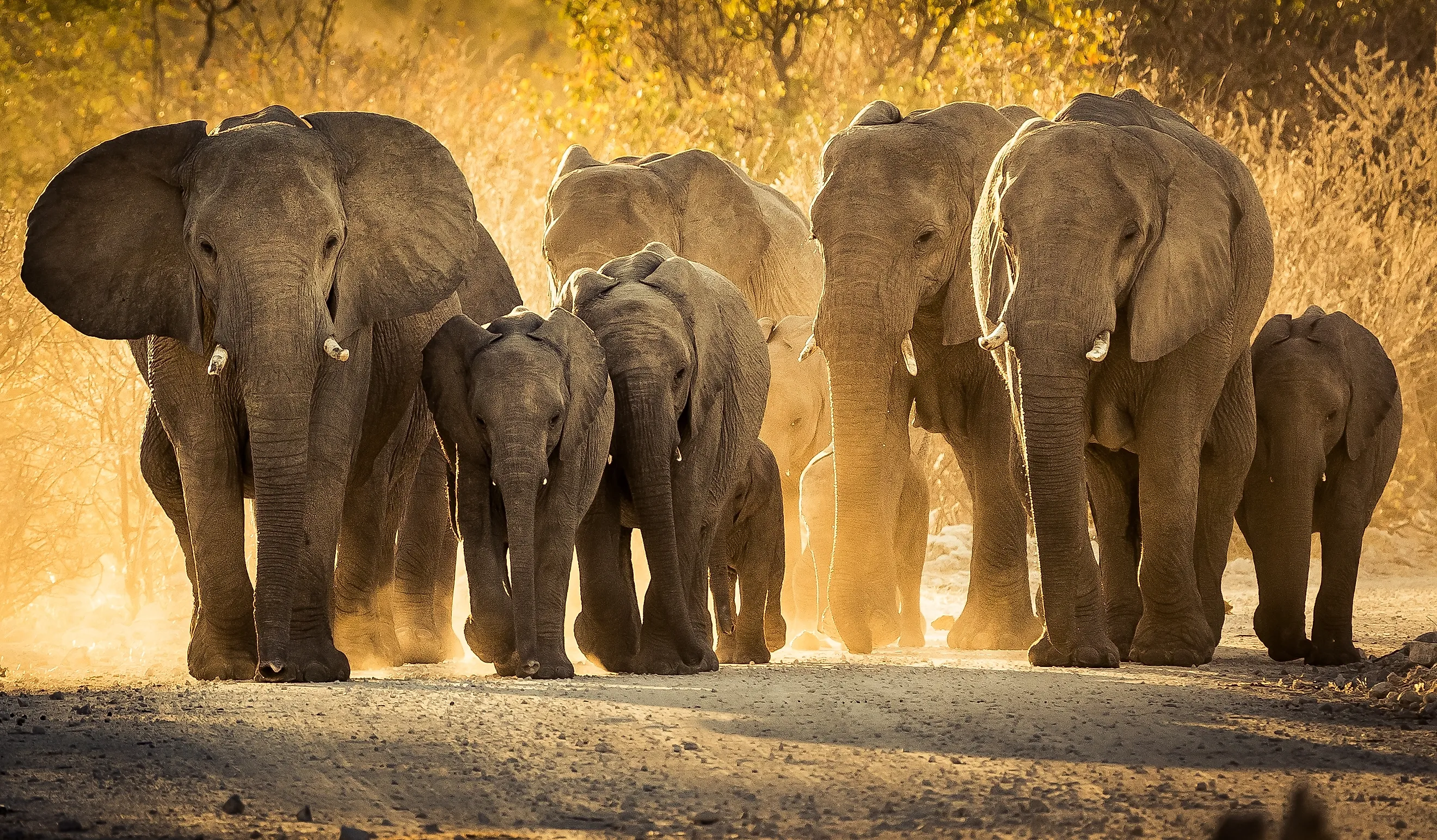
How Many Types Of Elephants Are There?
Classification Of Elephants
Elephants are large terrestrial mammals in the family Elephantidae, within the order Proboscidea. Their closest living relatives are manatees, dugongs, and hyraxes, which together with elephants form the clade Afrotheria. For many years, scientists recognized two main types of elephants: the African elephant (Loxodonta) and the Asian elephant (Elephas).
Earlier taxonomic attempts, including a 1942 classification, listed multiple African subspecies. However, modern genetic research has shown that African elephants fall into two distinct groups: the African bush elephant (Loxodonta africana) and the African forest elephant (Loxodonta cyclotis). DNA studies in the 21st century demonstrated that these two lineages diverged millions of years ago, supporting their status as separate species. That said, some conservation organizations and governmental guidelines still treat them as subspecies, so classification can vary depending on the source.
Asian elephants live across South and Southeast Asia. Within the Asian elephant species (Elephas maximus), three recognized subspecies occur: the Sri Lankan elephant (E. m. maximus), the Indian elephant (E. m. indicus), and the Sumatran elephant (E. m. sumatranus). A fourth population, the Bornean elephant (E. m. borneensis), is sometimes treated as a distinct subspecies based on genetic and morphological evidence.
African Elephant

African elephants belong to the genus Loxodonta, which includes two living species: the African bush elephant and the African forest elephant. They are the largest land animals on Earth and are known for their impressive size, complex social behavior, and high intelligence. Below is a description of the two African elephant species.
African bush elephant (Loxodonta africana)
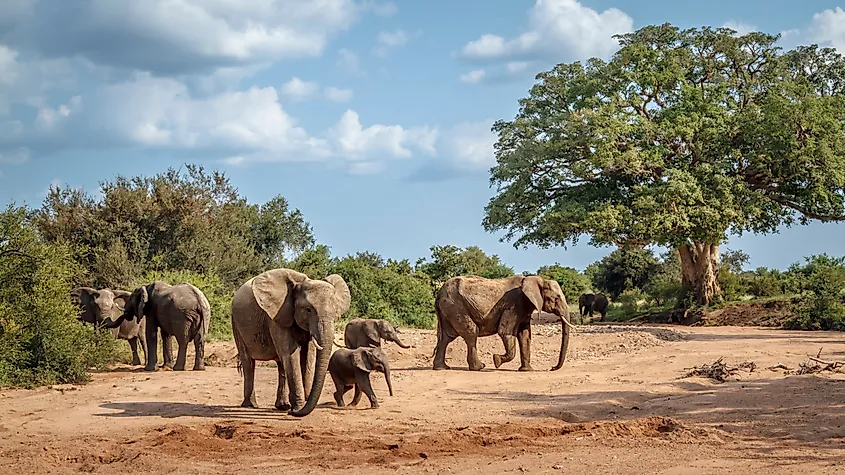
The African bush elephant (Loxodonta africana), also known as the savanna elephant, is the largest living land animal. Adult males usually stand 10 to 13 feet (3 to 4 meters) tall at the shoulder and weigh 4.5 to 6 metric tons, though rare individuals may exceed 10 tons. They are easily recognized by their large fan-shaped ears, which help release heat, and their long tusks, found in both males and females. These elephants live in matriarch-led family herds and range across eastern and southern Africa in habitats including grasslands, savannas, and open woodlands. They are keystone species that shape ecosystems by clearing vegetation, dispersing seeds, and creating water access points for other wildlife.
The four subspecies below are historic classifications based on regional variation. Modern genetic research typically treats the African bush elephant as a single species, but these geographic forms are still useful for understanding regional populations.
Southern African Bush Elephant (L. a. africana)
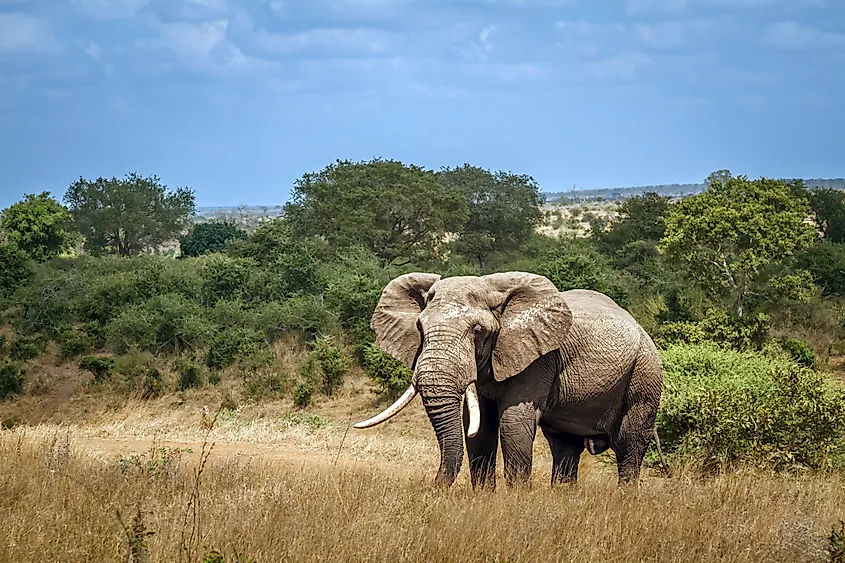
This form occurs across southern Africa, including Botswana, Namibia, South Africa, Zimbabwe, Zambia, Angola, and Mozambique. It is one of the most numerous populations of bush elephants and inhabits savannas, woodlands, and river systems. Conservation programs in southern Africa have helped stabilize some herds, though regional pressures still include habitat loss, poaching, and drought cycles.
East African or Masai Elephant (L. a. knochenhaueri)
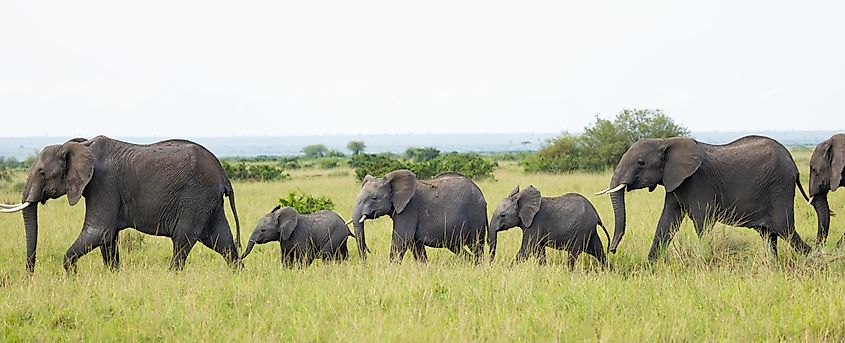
Once common in Kenya, Tanzania, Uganda, and parts of eastern Democratic Republic of the Congo, this regional type is associated with open savanna plains and acacia woodlands. These elephants historically migrated long distances following seasonal rainfall. Today, human-wildlife conflict, shrinking migration corridors, and poaching pose major challenges to their long-term security.
West African Bush or Plains Elephant (L. a. oxyotis)
Historically described from West and parts of Central Africa, including countries such as Senegal, Côte d’Ivoire, and Nigeria, these elephants are significantly reduced in number today. Many groups live in fragmented savanna and mixed woodland-forest zones, and populations have suffered from habitat fragmentation and heavy poaching pressure. Conservation programs focus on cross-border reserves and landscape connectivity to support surviving herds.
North African Bush Elephant (L. a. pharaohensis) – Extinct
Believed to have once lived across North Africa and the Sahara region, this form is thought to be extinct. It may have been the type used in ancient warfare, including by Carthage under Hannibal. As climate and human pressures increased, these elephants disappeared from the region’s grasslands and river valleys, leaving no surviving populations today.
African Forest Elephant (Loxodonta cyclotis)
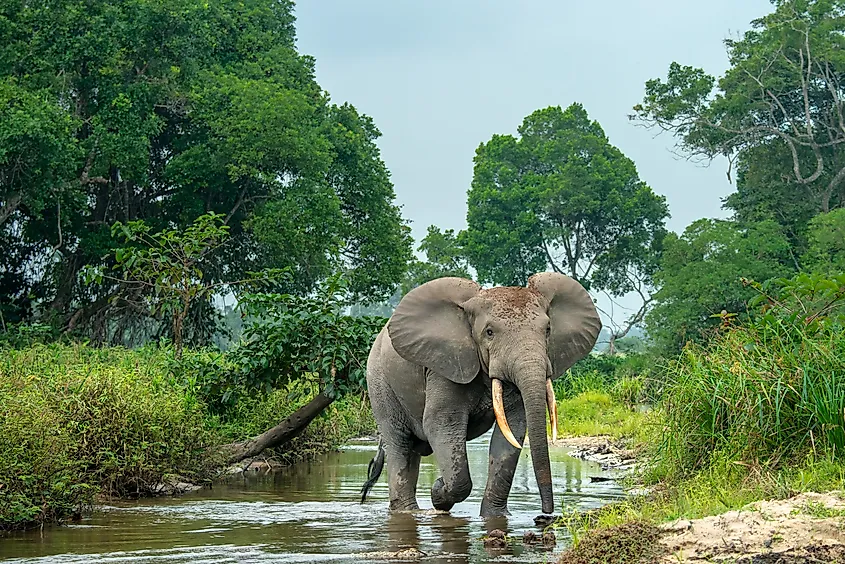
The African forest elephant lives primarily in the dense tropical rainforests of Central and West Africa, especially across the Congo Basin. Once considered a smaller form of the bush elephant, genetic studies confirmed that forest elephants are a distinct species, with the two lineages diverging roughly 2 to 7 million years ago. Forest elephants are smaller and more compact than bush elephants, typically standing 6.5 to 10 feet (2 to 3 meters) at the shoulder and weighing 2 to 4 metric tons. They have rounded ears, a narrower lower jaw, and straighter, downward-pointing tusks, which help them move through thick vegetation. Their tusks often have a yellowish tint and can grow long enough to brush the ground. Forest elephants are vital rainforest gardeners, dispersing seeds over long distances and maintaining forest structure. They reproduce more slowly than bush elephants, making them especially vulnerable to poaching and habitat loss.
Asian Elephant
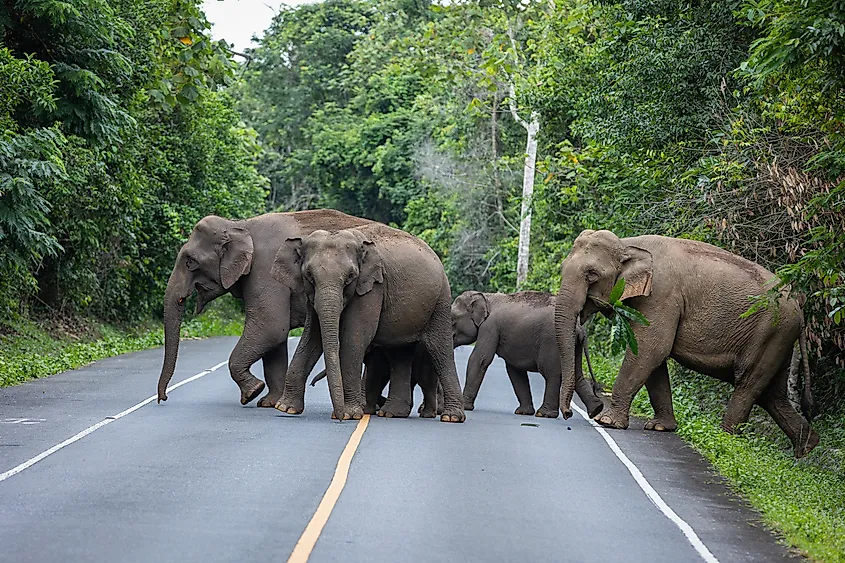
The Asian elephant is the only living species in the genus Elephas and ranges across South and Southeast Asia, with populations in India, Nepal, Bhutan, Bangladesh, Sri Lanka, Myanmar, Thailand, Laos, Cambodia, Vietnam, Malaysia, and Indonesia (Sumatra). Asian elephants are generally smaller than African bush elephants and have several distinguishing features. Their highest point is the head, which has a noticeable twin-domed shape with a central indentation, unlike the more sloped heads of African elephants. Asian elephants also have smaller, rounded ears, reflecting the cooler, more forested environments they inhabit, and more nail-like structures on their feet than African species. Females typically lack tusks, and males may or may not have them; those without visible tusks have small “tushes” hidden under the upper lip. Asian elephants live in matriarch-led family groups and rely heavily on forested habitats, where they feed on grasses, leaves, bark, and fruit. They face serious threats from habitat loss, human-elephant conflict, and poaching, and are currently listed as Endangered.
Asian Elephant Subspecies
The Asian elephant has three widely recognized subspecies, with a fourth (Bornean elephant) often treated as distinct by researchers.
Indian Elephant (E. m. indicus)
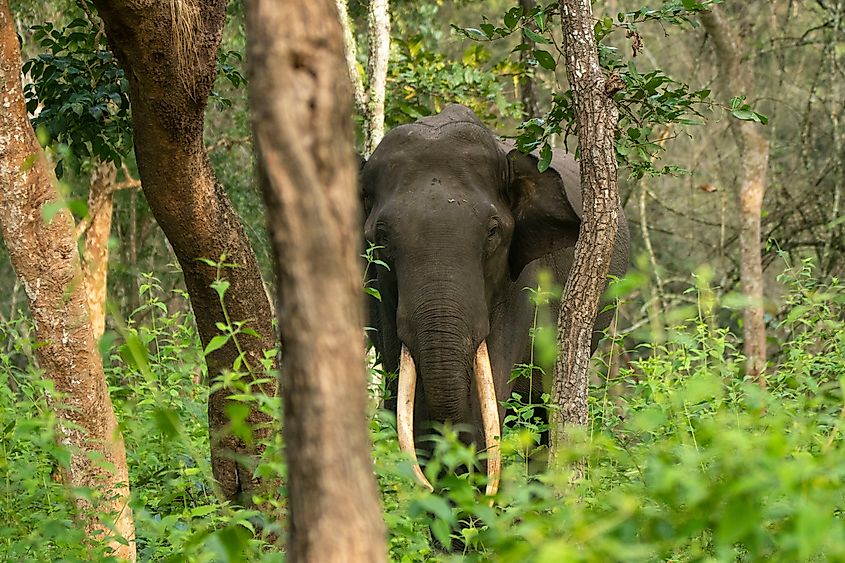
The Indian elephant is the most widespread subspecies and is found in mainland South Asia, including India, Nepal, Bhutan, and Bangladesh. These elephants tend to be tall with large bodies, and they adapt to a variety of habitats ranging from grasslands and dry forests to rainforests and foothills. Their populations are fragmented but remain the largest of all Asian elephant groups. Conservation efforts focus on protecting migration corridors, reducing human-elephant conflict, and restoring habitat connectivity as development expands across the region.
Sri Lankan Elephant (E. m. maximus)
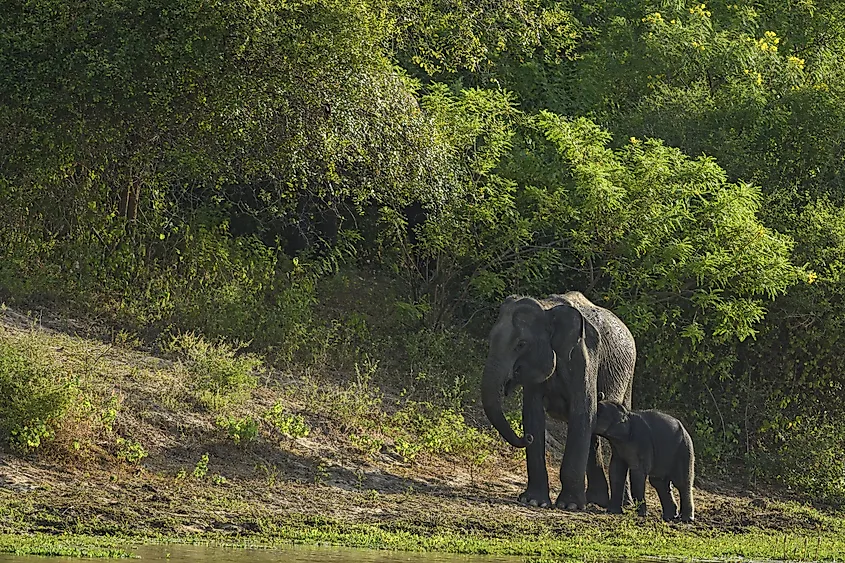
The Sri Lankan elephant, native to Sri Lanka, is often considered the largest and darkest-skinned Asian elephant subspecies. Many Sri Lankan males lack tusks, and tuskers represent only a small percentage of the male population. These elephants inhabit dry-zone scrub forests and grasslands, where they gather in large herds around seasonal water sources. They play a crucial role in maintaining Sri Lanka’s ecosystems, but rapid land-use change and agricultural conflict present significant conservation challenges.
Sumatran Elephant (E. m. sumatranus)
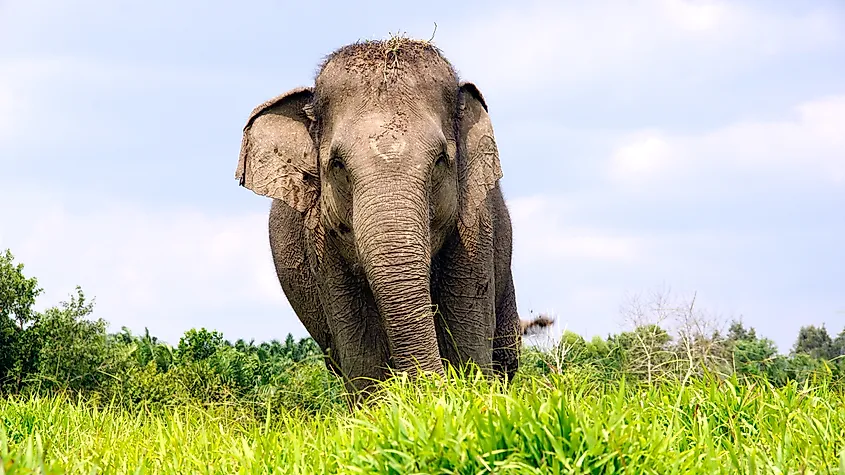
The Sumatran elephant lives on the Indonesian island of Sumatra and is the smallest Asian elephant subspecies. It has lighter skin, often with visible depigmentation patches around the ears and trunk. These elephants depend on lowland tropical forests, which have been heavily affected by logging, agriculture, and palm-oil plantations. Habitat loss on Sumatra is among the fastest in the world, making this subspecies Critically Endangered. Conservation efforts focus on anti-poaching patrols, protected areas, and community-based habitat management.
Bornean Elephant (E. m. borneensis) – Often Treated as a Subspecies
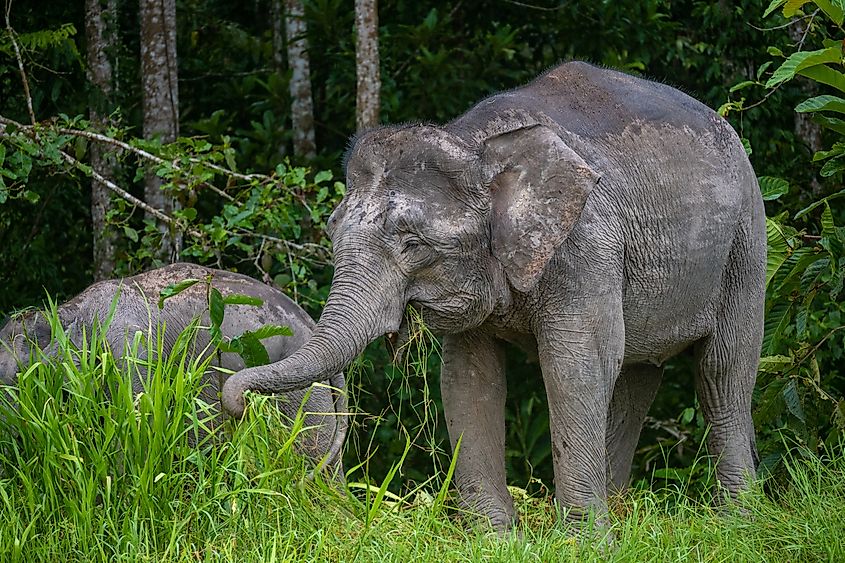
The Bornean (or Borneo pygmy) elephant lives mostly in Sabah, Malaysian Borneo, with a small portion in northeastern Kalimantan. Known for their smaller stature, relatively large bellies, and long tails, they are genetically and behaviorally distinct from mainland Asian elephants. Their origins remain debated, but recent research suggests they may represent an ancient isolated population rather than historically introduced elephants. Habitat fragmentation, agricultural expansion, and human-elephant conflict place them at high risk.











